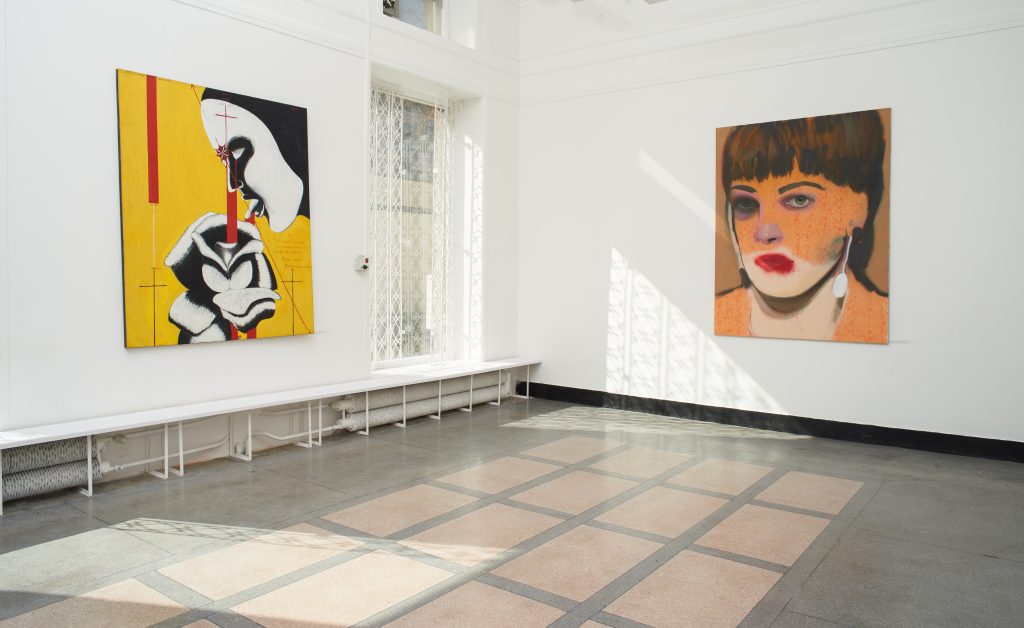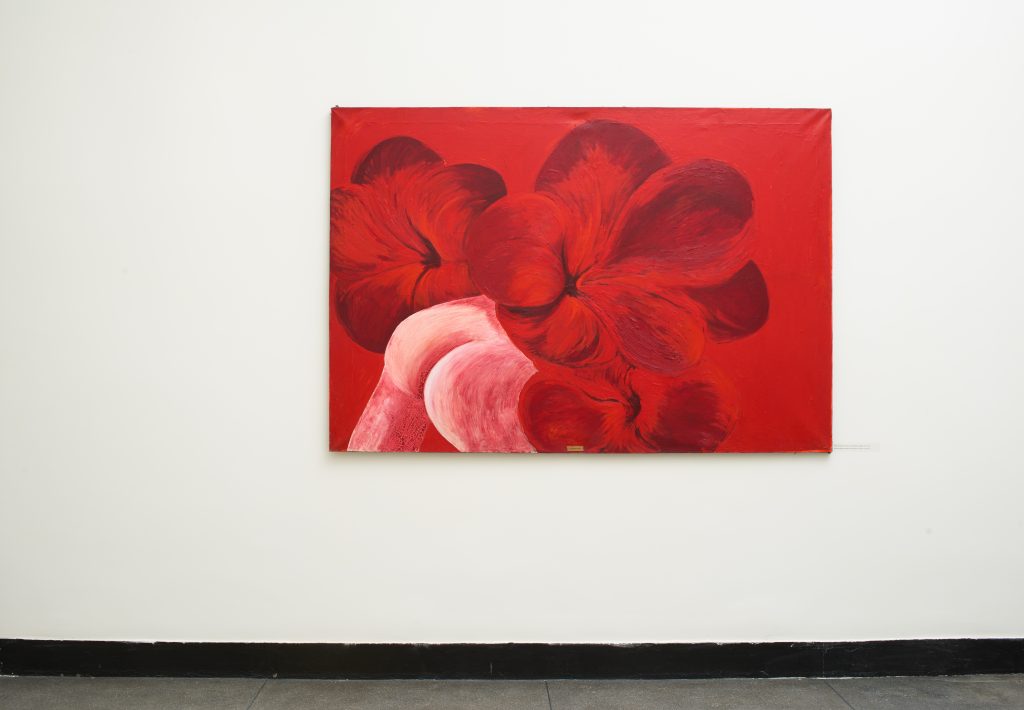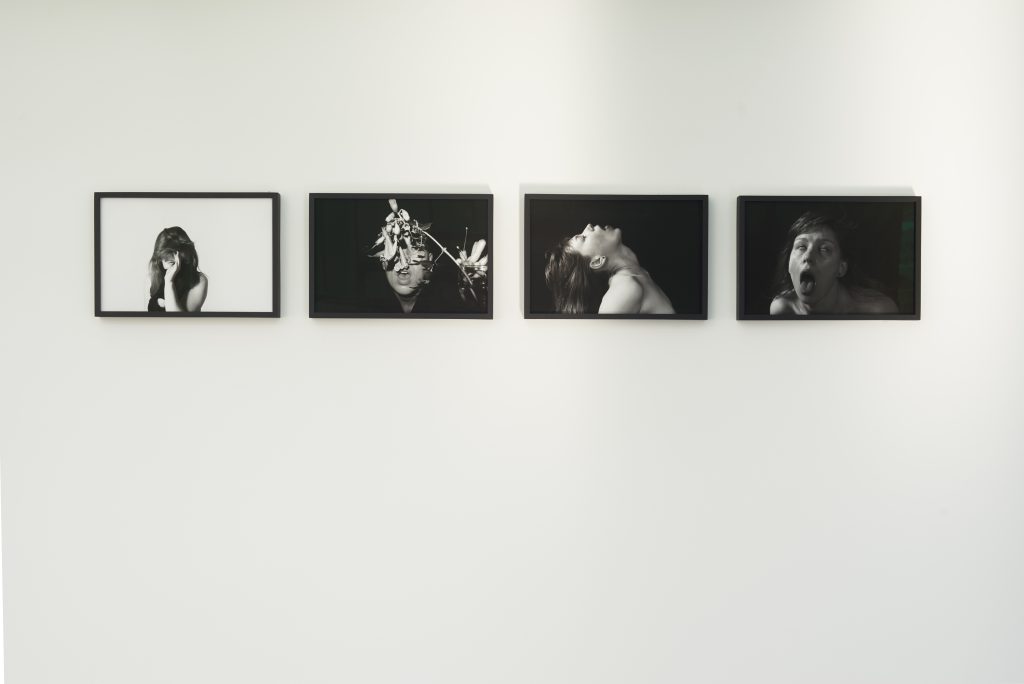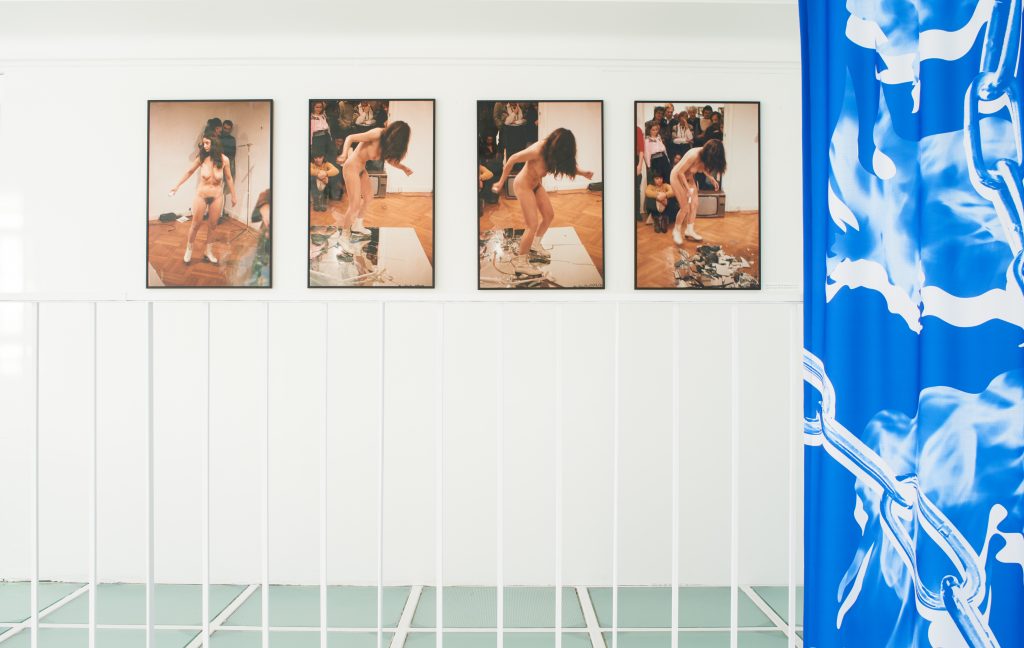The Madwoman in the Attic. Insanity and women’s creativity
Exhibitions → past
Opening: 10.03.2023

The Madwoman in the Attic is the title of an already classic book written in 1979, in the area of feminist literary criticism. Sandra M. Gilbert and Susan Gubar devoted it to the examination of literary works and biographies of Anglo-Saxon female writers, mostly Victorian, such as George Elliot, Mary Shelly, the Brontë sisters, Emily Dickinson, and Jane Austin. The researchers advance the thesis that in patriarchal culture, especially in previous centuries, women were not able to undertake creative activities, because they would be perceived as pathological individuals. The emancipation of women to become creators comes with a risk, which can be noticed in the tragic biographies of writers, as well as in their works. The novels feature female protagonists, who experience alienation, are considered monstruous or mad, but also − suffer from lethal disease. In life − their chosen profession and their unwillingness to fit into the scenario forced on women from their class led them to alienation, which often went hand in hand with economic poverty, as well as physical or mental illness. When Bertha − the Madwoman from the attic, whose figure seems to contain everything that couldn’t fit within the colonial Victorian culture − violently interrupts the relationship developing between Jane and Mr. Rochester, she signals a transgression of a woman trying to execute her agency and act out of her own will. By causing the fire, the “Madwoman” expresses her desires, her strong emotions, her need for change and agency. Imprisoned, she demands her rights. No matter the price. Therefore, she is also a figure representing the author herself, because to transgress the existing order, she may even resort to acts of destruction and/or self-destruction.
Within the framework of the exhibition, the curator Ewa Opałka would like to point out such attitudes of women-artists that prove women still face similar challenges to those from Victorian culture − extremely conservative when it came to emancipation − when they undertake creative activities. During her performance, Pirouette (1984) Ewa Partum wore figure skates and then performed the pirouette on a mirror surface – reflecting the female artist, was finally broken. The mystical paintings by Mariola Przyjemska created in the second half of the 1980s were an expression of her urgent need to create on the verge of a mystical experience and ecstasy. Flowers and Ass painting (1988), emanating with intense redness and making reference to the series of Flowers by Andy Warhol, we can see a human figure “diving” into a flower calyx. The historical, feminist artworks by Partum enter into dialogue with contemporary photographs and performance recordings by Aleksandra Młynarczyk-Gemza. The Artist, as part of her photographic practice that she seems to treat as a kind of self-therapy, reconstructs “points of view” inscribed in the visual code of Western art. The paintings by Adela Janska, presenting a big close-up of a beautiful young woman’s face, in the artist’s characteristic style, seems to maintain a dialogue with the famous short story by Charlotte Perkins Gillman The Yellow Wallpaper from 1892. In turn, the work by Edna Baud refers to the phenomenon of changing the gender identity in creative practicices of Victorian female writers and revisits the motif of curtains and obscuring something that would perhaps induce unhealthy curiosity, or perhaps − terror. A stuffy, claustrophobic atmosphere provoking the need for radical transgression is expressed by Anna Zaradny in her work Burundanga. The title refers to a toxic plant from South America that was used by criminals − eating its extracts makes people extremely prone to the influence of others.
The artists: Edna Baud, Adéla Janská, Aleksandra Młynarczyk – Gemza, Ewa Partum, Mariola Przyjemska, Gabi Rosenzweig, Anna Zaradny










